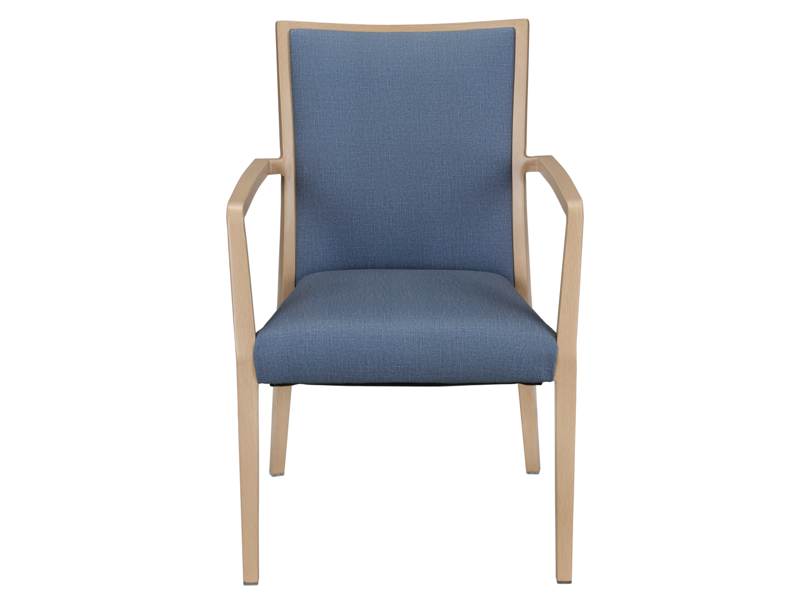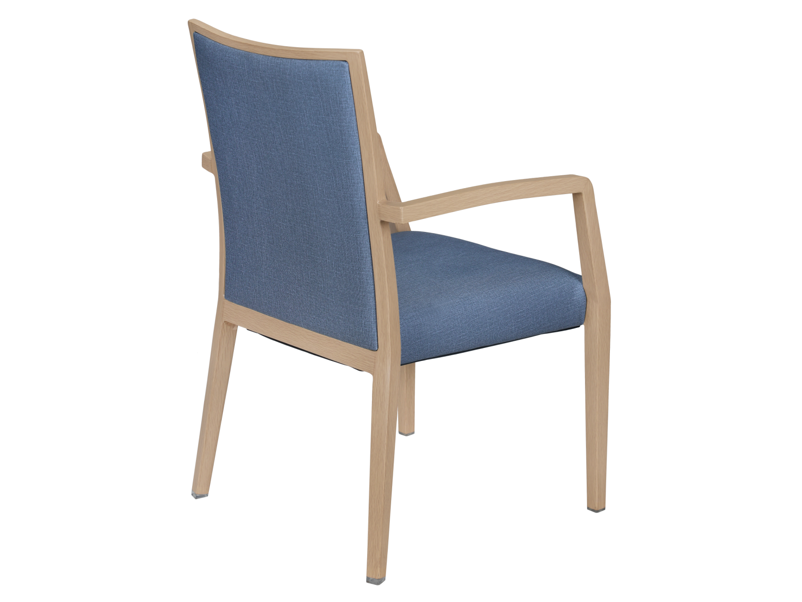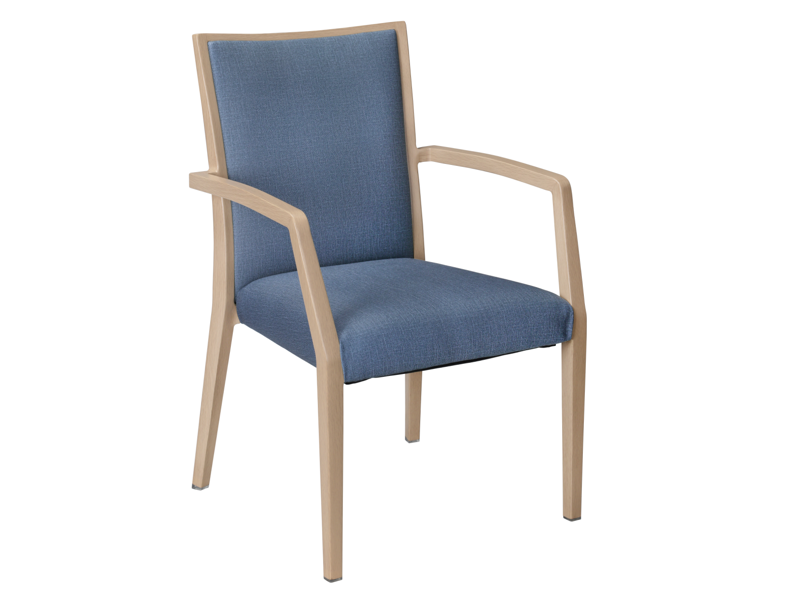What Makes Furniture Safe for Seniors? Key Features and Design Considerations
According to research, the average lifespan has increased significantly in the last few decades. This has also led to an increased number of seniors choosing to move into elderly living facilities. As the elderly population increases, creating a safe environment for them has also become paramount. And one of the crucial elements in creating a safe environment is furniture design.
After all, senior living centers are not a place where the elderly just visit for a brief period of time. In fact, it is a permanent residence for them, which further raises the importance of creating a safe environment. Recent studies suggest that furniture designs that create a stimulating & pleasant environment can improve seniors' overall health!
That's why today, we will look closer at what makes furniture safe for seniors, along with key design considerations.

6 Key Features of Safe Furniture for Seniors
These days, choosing furniture for senior living facilities isn't just limited to great designs & colors alone. Although these things are important, one can't ignore the need for comfort & functionality as well.
That's why it is common among senior living centers to focus more on the residents' well-being than the employees. So without any further ado, let's jump into what makes the furniture safe for seniors:
1. Safe Design
Seniors experience poor eyesight and impaired balance with age, which makes them more fragile than adults. This increases the chances of them bumping into furniture and getting injured. That's why one of the first key features of safe furniture for seniors is to minimize the chances of injury arising from the furniture. Instead of rectangular tables, circular tables should be used as they have no sharp edges. Similarly, the corners and edges of the chairs must be completely polished to remove any chances of injury. Just like that, chairs with curved legs can also lead to tripping hazards and should beavoided. Overall, the furniture design for seniors should be without sharp edges with no welding marks on the frame.
2. Firm Cushioning
Senior-friendly furniture must have firm cushioning that's not too soft or hard. Simply put, cushioning of moderate hardness is best for extended periods of sitting without discomfort. In addition, firm cushioning also makes it easy for the elderly with limited core strength to easily get out of the chairs.
If you think about it, one can sink in if the cushioning is too soft, making it significantly difficult to stand up. Like that, hard cushioning can make sitting uncomfortable, even for a few minutes at best.
And last but not least, the chairs which are designed for the elderly must have ample cushioning on all the important parts. This includes the seat, backrest, and armrests (if present).

3. Seat Depth
Since we are talking about the safety of senior furniture, we can't ignore the seat depth at all. A chair with ideal seat depth enables seniors to sit without leaning backward or slouching forward. Similarly, the seat width should also be ample to ensure that proper support is provided to all body parts. An adequate seat width also supports the upper body parts, which helps promote proper blood circulation in the legs. The seat's exact dimensions can vary depending on the chair's design, but it should be 19.5 inches wide and around 19 - 20 inches deep. Simply put, a chair with seat depth and width higher than these figures is safe for seniors.
4. Seat Construction
When looking for safe furniture for the elderly, one important factor to look at is seat construction. In other words, look at the mechanism and the materials used to construct the seat.
Normally, good seats are built using one of these three methods:
1. A hardwood plywood board with a 3/4 inch thickness is used as a base for the seat cushioning.
2. In some chairs, the seat base is made with a spring system that is evenly spaced out along with steel tie wire in two rows.
3. Some chairs also use plywood seat board which is further covered with elastic bands to improve flexibility and strength.
The seat is usually padded with medium to high-density foam that can withstand rigorous use while maintaining the original shape. In general, high-density foam is safer for the elderly as it retains the original shape and thus makes it easy for them to get in and out of the chair.
Another benefit of using a chair made with high-density foam is that the padding remains in pristine condition & thus can last much longer than other chairs made with medium/low-density foam. This can help the senior living centers to save costs that would otherwise be spent on maintenance or buying replacement chairs. But most importantly, high-quality seat construction promotes safety and allows peace of mind knowing that seniors can relax on the chairs without any risk of breaking down.
5. Arm Rests
Armrests are an essential component of elderly furniture, providing enhanced safety and mobility. Ideally, safe furniture for seniors should have armrests that are slightly lowered at the back. In simple words, the front side should be a little higher than the back side of the armrests. The next element is the width of the armrest which should be 4.7 inches or a little more. That's the classic recommendation because it provides ample support to the arms and forearms. Similarly, it allows seniors to easily get out of the chair by relying on the armrest supports. However, some seniors say that slimmer armrests work best as they are easier to grip and thus promote accessibility. That's why the issue of armrests' width depends on the seniors' individual requirements. While some prefer a wider armrest for full coverage of the arms, others prefer slimmer armrests as they offer easy grip. In general,armchairs are safer for seniors than chairs without armrests. So if one has to decide between a chair with and without armrests, always go for the one with armrests.

6. Chair Frames
Frame gives shape to a chair and supports the entire weight of the sitter as well. A chair is deemed safe for seniors if the frame is made with a sturdy material such as solid wood or aluminum. In senior living centers, aluminum frame chairs are preferred as they are able to withstand heavy loads. This greatly reduces the chances of the chair breaking down after prolonged use.
Another benefit of aluminum frame chairs is that they are resistant to corrosion and rust, further enhancing their lifespan.
Many furniture manufacturers have introduced aluminum frame chairs with the looks of wood these days. These chairs are called "wood grain metal chairs" as they incorporate an aluminum frame, which is coated with a wood grain texture. One of the key benefits of going with wood grain metal chairs is that they bring forth the durability of aluminum and the timeless appeal of wood in one package.
Conclusion
With the right approach, the safety of the furniture can be enhanced, which ultimately contributes towards the well-being of the elderly living at the senior living facilities. As long as all of the key features mentioned on this page are kept in mind, you will have no trouble finding the right furniture for seniors.
So the next time you want to buy safe furniture for the elderly, remember to ask them about armrests, chair frames, seat construction, & other important features.











































































































